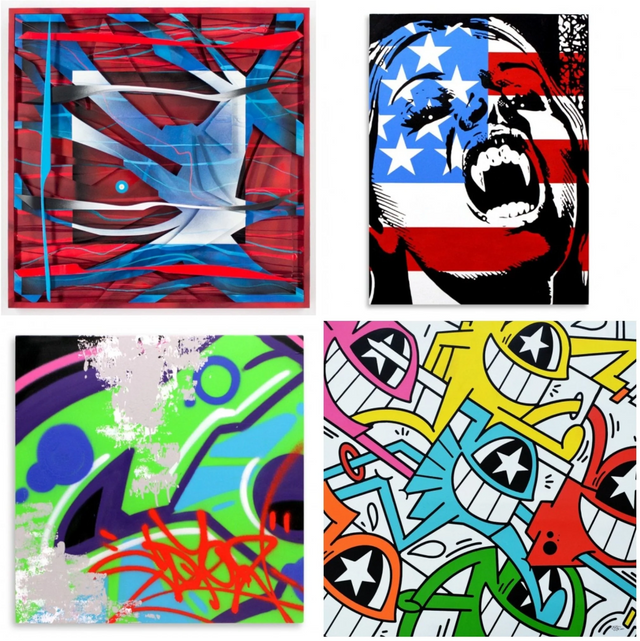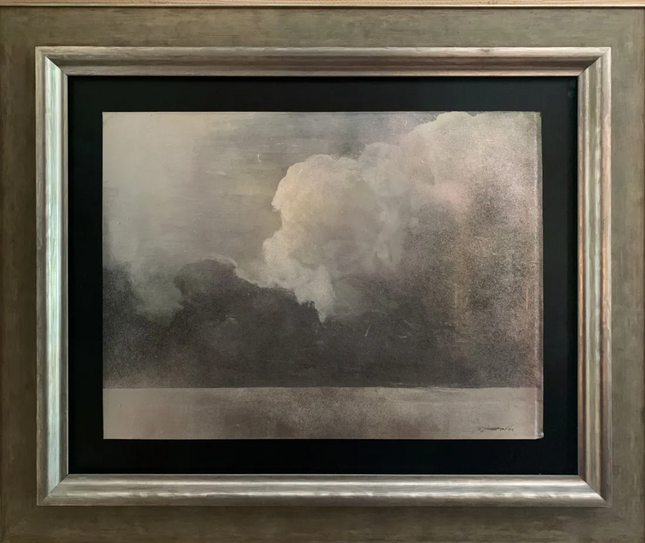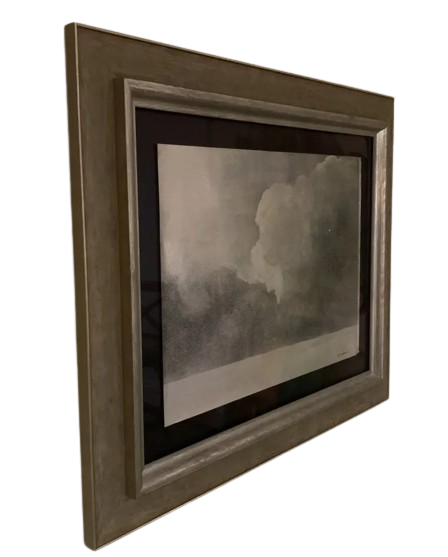
Painting Original Artwork


Richard Hambleton Silver Seascape Original Guerra Pigment Painting by Richard Hambleton
Silver Seascape Original Guerra Pigment Painting by Richard Hambleton of, a Kind Artwork on Fine Art Paper by Street Art Pop Artist. 2002 Signed & Dated Guerra Pigment & Paint Framed Painting Original Artwork Size Framed 33.5x28 with COA & Letter From Robert Murphy Richard Hambleton's Artistic Mastery in "Silver Seascape" Richard Hambleton, a luminary in the world of street pop art and graffiti artwork, left an indelible mark on the canvas of urban art history. His unique contribution to the genre is encapsulated in works like the original "Silver Seascape" painting. This piece is not merely a visual treat but a narrative of the artist's profound relationship with the natural elements, painted with the Guerra pigment and paint that became part of his signature technique. Completed in 2002, it is a one-of-a-kind artwork on fine art paper, framed and ready to inspire onlookers in any setting. Seascape stands out as a testament to Hambleton's artistic versatility and ability to transcend street art's traditional boundaries. Known predominantly for his shadowy figures that lurked on the walls of city buildings, this seascape presents a softer, no less impactful, side of his oeuvre. The 33.5x28 framed artwork captures the ethereal interplay between light and shadow, a dance of natural forces rendered in the moody tones of Hambleton's palette. The artwork, signed and dated by Hambleton, carries the authenticity of his vision, attesting to the originality that was the artist's hallmark. The signature aluminum art Guerra pigment combined with black art Guerra paint creates a texture and depth that lends the piece a three-dimensional quality, blurring the line between the tangible and the ephemeral. The Provenance and Legacy of Hambleton's "Silver Seascape" The provenance of this artwork adds to its allure. Having belonged to the collection of Robert Murphy, a close associate of Hambleton's and a figure prominent enough to be featured in the documentary "Shadowman," this piece is steeped in personal history. The Certificate of Authenticity (COA) accompanying the painting, provided by Murphy and a second COA from Dirtypilot, underscores the artwork's legitimacy and the close connection between the artist and his confidants. This painting is a visual representation of Hambleton's talent and a slice of his personal journey with his contemporaries. Impact and Influence of "Silver Seascape" Hambleton's "Silver Seascape" is not merely a decorative piece but a conduit for the raw and compelling energy that characterized his street pop art and graffiti work. The piece resonates with the spirit of freedom and spontaneity often associated with the best of street art. At the same time, its execution and presentation echo the discipline and finesse of fine art. It's a bridge between worlds, embodying the rebellious heart of street art within the refined context of a gallery-worthy piece. This artwork carries within it the echoes of the streets where Hambleton began, transformed into a form that commands contemplation and respect in the silence of a collector's enclave. The seascape genre, often used to portray the sublime and the tumultuous nature of the sea, is adeptly harnessed by Hambleton to reflect similar emotions he stirred through his street art. The dynamic and ever-changing sea, a metaphor for life and art itself, is depicted with a brooding, timeless, and immediate intensity. It reflects Hambleton's understanding that art, like the sea, is never static, always leaving an impression unique to the viewer's perception. Richard Hambleton's "Seascape" is a remarkable work that offers a distinct departure from the artist's urban street art, guiding viewers to a contemplative horizon where the sea meets the sky. It is a masterful creation that brings together the disparate elements of street pop art and fine art, framed and presented in a manner that is both accessible and profound. This piece celebrates Hambleton's legacy, a visual poem composed in the language of color and form, ready to hang and transform any space it occupies.
$42,341.00



